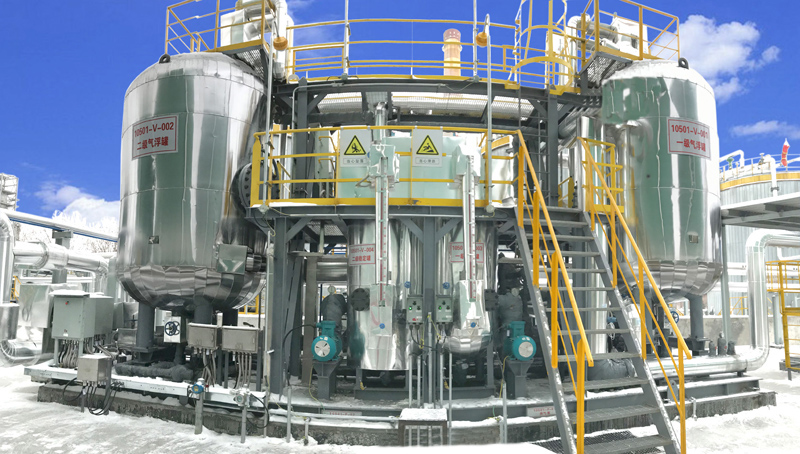Product Category
- Wastewater Treatment Equipment
- -CDFU(Cyclonic Dissolved Gas Flotation Unit)
- -CDOF(Cyclonic Dissolved Ozone Flotation Unit)
- -Heterogeneous Catalyst
- -Micro-Bubbles Generation System
- -Oil-Water Separation Equipment
- -Filters
- Wastewater Treatment Process
- -Refinery Oily Wastewater Treatment
- -Tank Area and Oil Depot Water Treatment
- -Oilfield Reinjection Water Treatment
- -Fracturing Flowback Fluid Treatment
- Cases
CDFU(Cyclonic Dissolved gas Flotation Unit)
Product Detail
1. Technology introduction
CDFU(Cyclonic Dissolved Gas Flotation Unit) is a patented technology independently developed by our company. It effectively combines centrifugal separation technology, dissolved air flotation (DAF), and ultra-fine bubble generation technology to achieve highly efficient separation of oil and suspended solids from wastewater. Key features include:
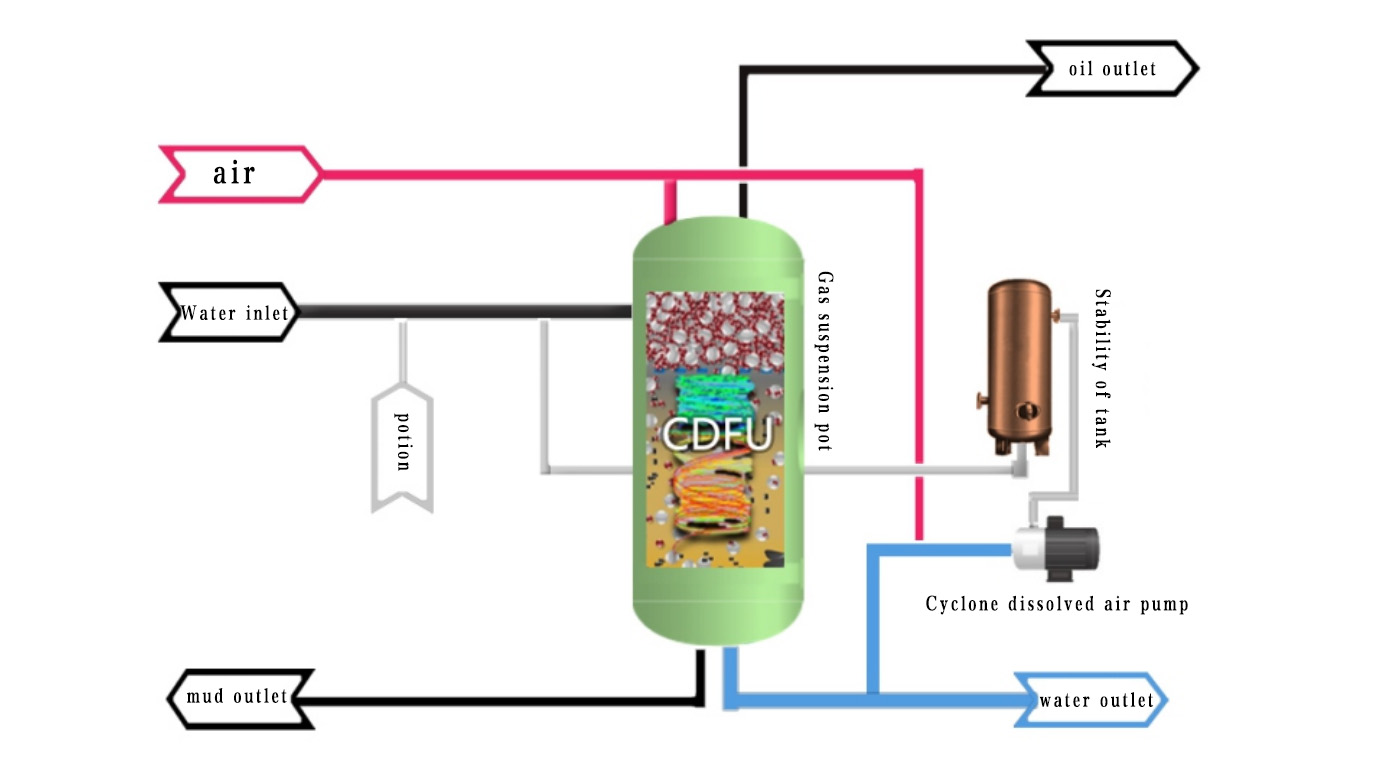
Pic. 1 Process Diagram
·Micro-bubble generation technology
·Dissolved air floatation (DAF) technology
·Hydrocyclone technology
·Highly efficient Coalescence
·Demulsification without chemicals
·Patented product
2. Technical Principle:
The wastewater to be treated is mixed with dissolved gas water. Then, the mixture enters the floatation tank from a special angle along the tank wall. Under the effect of dynamic flow and internal structures, a stable cyclonic flow field is rapidly formed. Through centrifugal force generated by the field, micro-bubbles and oil droplets rapidly collide, adhere and coalesce to form floating oil.
The floating oil gradually rises and enters the inner oil collection cylinder, and then is discharged into the floating oil collection system through the outlet. Meanwhile, the separated exhaust after floating is discharged into the exhaust treatment system. The treated wastewater gradually flows downward from the outlet of the CDFU.
3. Introduction of Cyclonic Centrifugation Technology:
Dissolved gas water is mixed with wastewater and then flows into the equipment for generating cyclonic flow. This process increases the collision probability between bubbles and particles. Due to the centrifugal effect being weak, it will not cause oil emulsification. Micro-bubbles have strong stability and a large specific surface area, resulting in their adsorption of small particles being more efficient. This process can ensure that the suspended matter in the effluent has a small median particle size and low content.
4. Technical advantages
a. Short Retention Time:
The oil-water separation process is extremely rapid, with retention time around 1 to 3 minutes (1/6 of traditional equipment).
b. High Efficiency:
The equipment demonstrates effective separation of floating oil and free oil (oil droplets with particle sizes of 30-100㎛), achieving a removal efficiency up to 99%.
c. No Chemical Agents:
Due to the relatively small bubble diameter (D50≈25㎛), the equipment can remove up to 90% of emulsified oil (oil droplets sized 0.1-20㎛), showing an exceptional effect. Remarkably, most emulsified oil can be removed without adding any chemical agents.
d. Less Maintenance and Operation:
The inner structure is simple. Consequently, it is not easily prone to scaling and clogging, particularly in high-salinity environments, which requires less maintenance and less operational costs.
e. Automation:
Under the fluctuation of water volume and oil content, it can still maintain high-precision liquid level and pressure control. The equipment is fully automatically controlled and has high stability in the effluent.
f. Small Footprint:
CDFU adopts a skid-mounted design which only occupies a small footprint, optimizing space utilization. The design makes it easier to assemble and construct.
5. Comparisons between Traditional Technology and CDFU
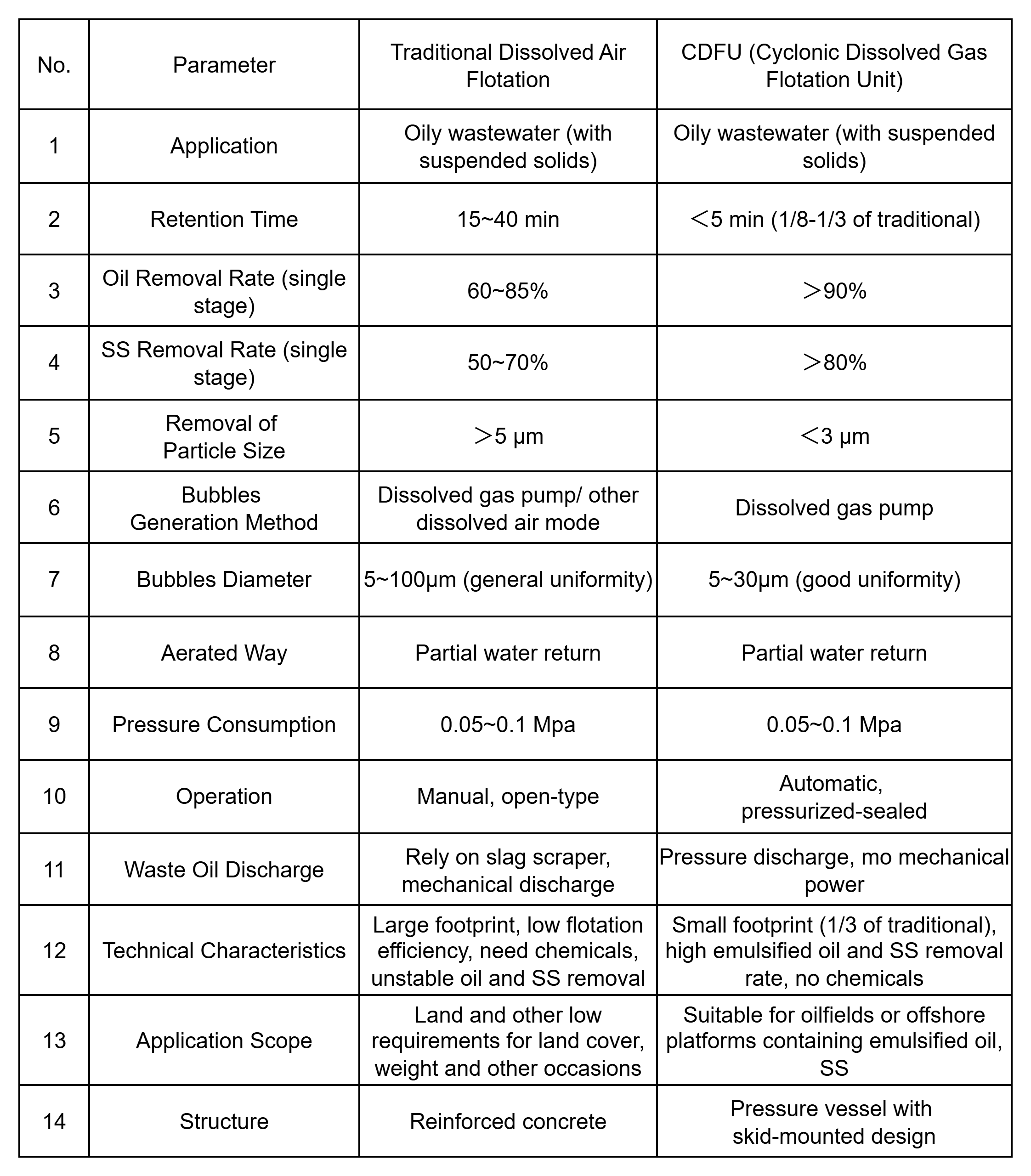
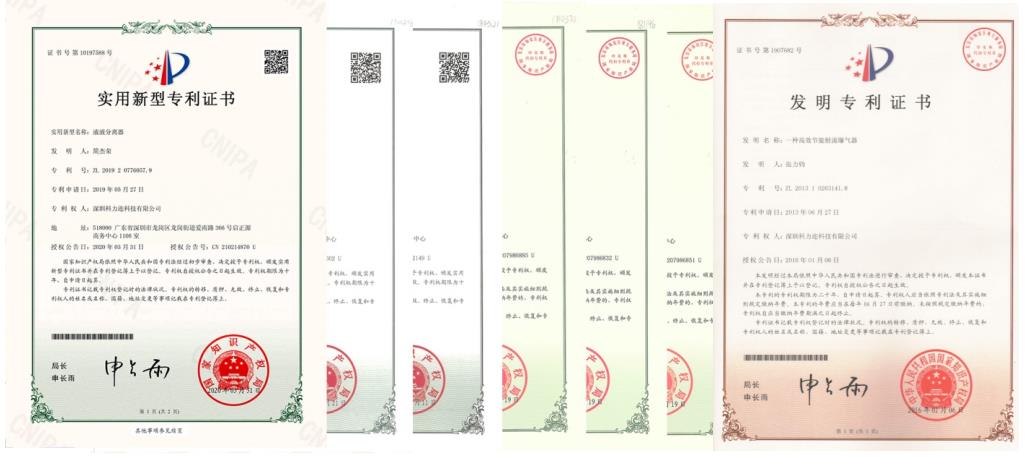
Pic. 2 Related Patents
Application industry: petroleum refining, electric power, metallurgy, medicine, printing and dyeing, municipal, landfill leachate, river sewage treatment, etc.
6. Cases
Case 1:
(2017) Produced water treatment and re-injection of petrochina Changqing Oilfield, the oil content of sewage ≤1500ppm, the treatment capacity 20m³/h, the treatment equipment two-stage CDFU+ walnut shell filter, the oil content of CDFU effluent ≤30ppm, SS≤30ppm, the oil content of filter effluent ≤10ppm, SS≤10ppm, Median particle size ≤5μm.
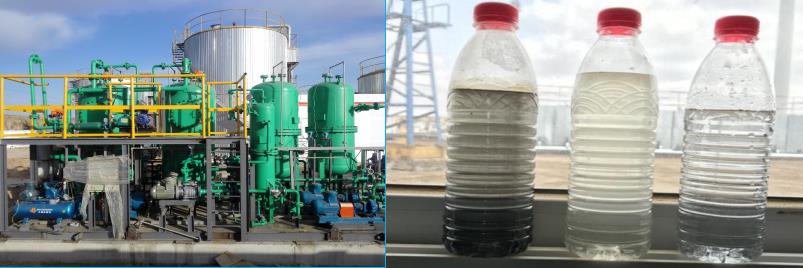
Pic 3. On-spot equipment dual-stage CDFU+ walnut shell filter Pic 4. Influent vs. Primary effluent vs. Secondary effluent
Case 2:
(2019) PetroChina Dushanzi Petrochemical electric desalting sewage treatment, sewage oil content ≤2000ppm, treatment capacity 100m³/h, treatment equipment two-stage CDFU, water oil content ≤10ppm.

Pic 5. Dual-stage CDFU of on-site equipment Pic 6. Secondary effluent vs. Primary effluent vs. Influent
Case 3:
(2021) Sinopec conventional gas field produced liquid (condensate) treatment, sewage oil content ≤500ppm, treatment capacity 30m³/h, treatment equipment first-level CDFU, water oil content ≤20ppm (indicator requirement 50ppm).
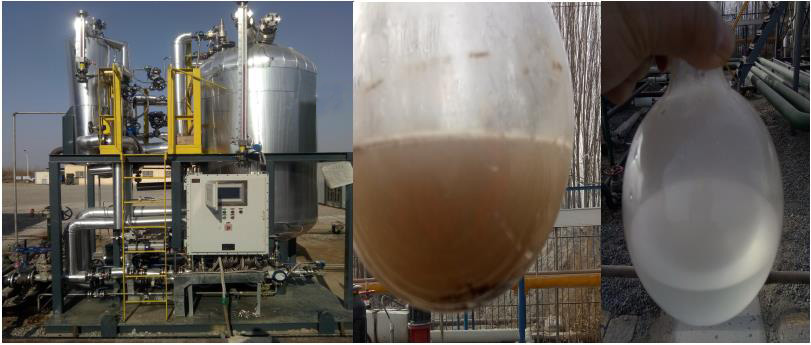 Pic 7. Single-stage CDFU on-spot equipment Pic 8. Influent vs. Effluent
Pic 7. Single-stage CDFU on-spot equipment Pic 8. Influent vs. Effluent
